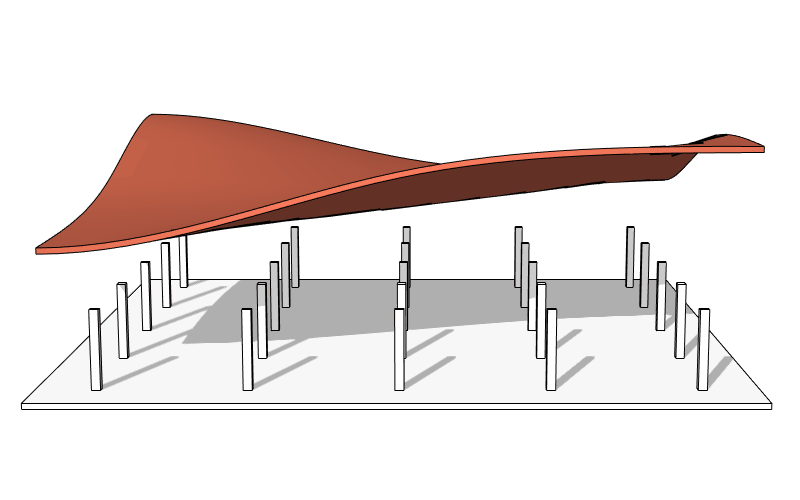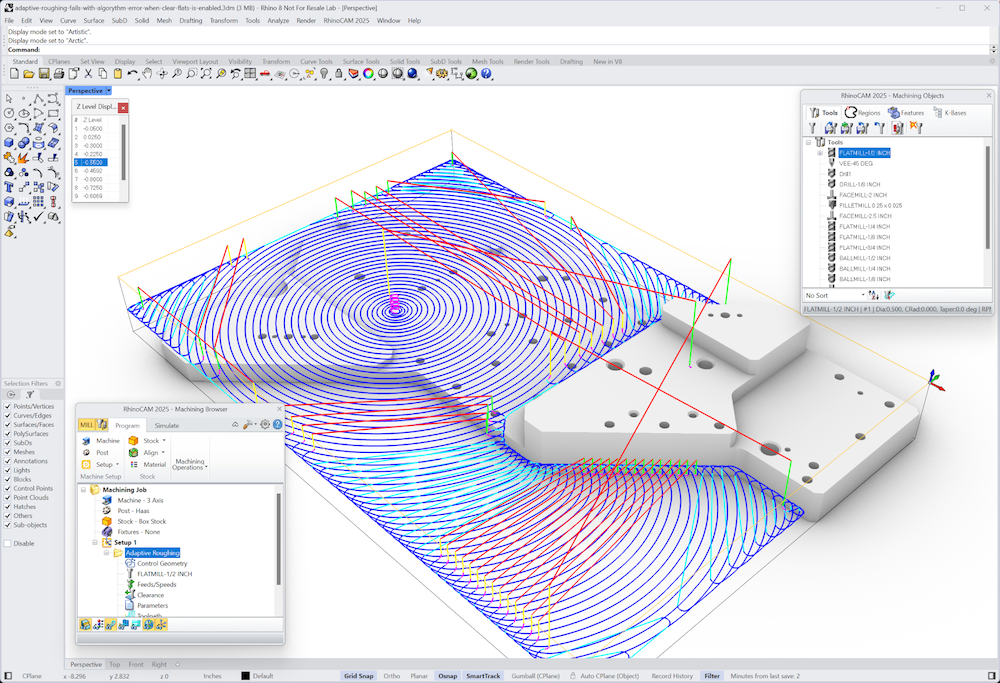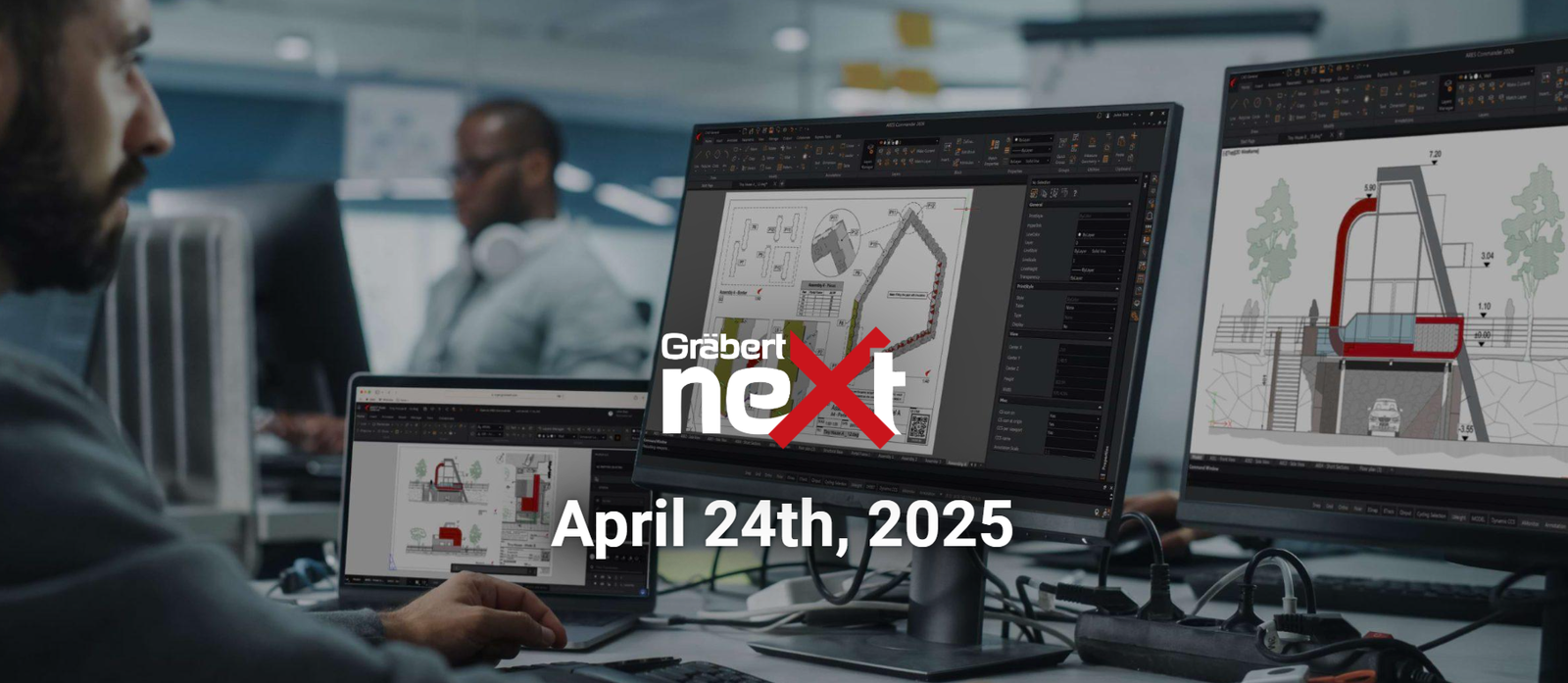Your Cart is Empty
Customer Testimonials
-
"Great customer service. The folks at Novedge were super helpful in navigating a somewhat complicated order including software upgrades and serial numbers in various stages of inactivity. They were friendly and helpful throughout the process.."
Ruben Ruckmark
"Quick & very helpful. We have been using Novedge for years and are very happy with their quick service when we need to make a purchase and excellent support resolving any issues."
Will Woodson
"Scott is the best. He reminds me about subscriptions dates, guides me in the correct direction for updates. He always responds promptly to me. He is literally the reason I continue to work with Novedge and will do so in the future."
Edward Mchugh
"Calvin Lok is “the man”. After my purchase of Sketchup 2021, he called me and provided step-by-step instructions to ease me through difficulties I was having with the setup of my new software."
Mike Borzage
An Interview with Doug Halliday, Business Development Manager at Adobe (Acrobat 3D)
April 13, 2007 7 min read

Doug Halliday is the Business Development Manager specializing in manufacturing at Adobe. Doug's main focus is on Acrobat 3D and its applications for design and manufacturing. Recently he started a blog where he talks about Acrobat 3D and shares his experiences with the Acrobat users community. I first met Doug when, after posting my impressions on Acrobat 3D, I left a comment on his blog with some feedback about the new Acrobat 3D 8. I thought our discussion would be of interest to a larger audience, so I asked Doug to address my questions and concerns in the form of an interview. He kindly accepted.
Doug, can you tell us a bit about yourself and your role in Adobe?
Sure, I would be happy to. But, before I start, let me thank you for the opportunity to speak with you. I am still somewhat new to Adobe, having come on board late last year. I am in a business development role focused upon manufacturing. I do some speaking, participate in numerous events, work a bit with some of our partners and resellers and spend as much time as I can with customers.
I have been pretty fortunate. I came to Adobe after a number of years – almost 30, in the automotive and IT industries. I spent time in various technical, managerial and executive roles. I have had the opportunity to explore product development and manufacturing engineering, but I have never strayed far away from PLM, which is my first love. I have really concentrated over the past several years on collaboration, which I think is the future of PLM.
PDF is perceived and valued as a safe and easy way of making static copies of digital documents. With the new release of Acrobat 3D, Adobe is proposing a different role for PDF files. How can the two views coexist?
You know, I used to think of Acrobat and PDF as just a way to create static, secure copies of documents too, but that was some time ago. I think some people in manufacturing are like I was. I think one of our challenges is continuing to grow the awareness of what the product and format can do from a collaboration, interoperability and technical illustrations perspective.
Something to keep in mind, of course, is many people asked the same question when Adobe first grew PDF beyond its traditional roots, the creative pro and print production area. I think you'd find wide agreement that expanding PDF to be just as applicable to the general business environment has been quite a success.
Adobe’s first big move from static to "richer" PDF’s was to add a collaboration layer – the ability to add and share comments in a review and markup process. The second move we termed the “intelligent document”. That was around 2002-2004 – integrating technology gained from Adobe’s acquisition of Accelio made PDF an XML vehicle that could be dynamically connected to backend systems like ERP, PDM, SCM, or others. PDF now enables linking structured XML data to form fields for dynamic data presentation and collection. This enables PDF to extend the reach of these back-end systems via the Reader.
So, today, PDF is quite a flexible format. Combined with Adobe Reader, it delivers an “infrastructure” that allows enterprise integration and combined services like Digital Rights Management, digital signatures, rich multi-media content, as well as a way to support native file attachments. Javascripts can provide dynamic and tailored business logic interactions with PDF, too.
I first saw Acrobat 3D almost two years ago. That was the day I met Francois le Masne. Francois is now director of Acrobat 3D Business for Adobe. He really opened my eyes that day. Today, I think of PDF as a vehicle that can assimilate more and more complex information, including 3D, and be broadly distributed and quite easily adopted on a global basis.
Different categories of users interact with 3D models in different ways. For example, when a user needs to look at the back of a 3D model, a mechanical designer rotates the 3D object while an architect moves around the object. How Acrobat 3D manage to serve wide and diverse group of users with a single user interface?
We really are aimed at things like collaboration between engineering and manufacturing where the cost and complexity of more specialized tools can be a hindrance. The idea really is to add value to what is already in place. Acrobat 3D allows a myriad of 3D formats to converge into a common, well understood document standard that allows anybody to engage with 3D content, regardless of operating systems, CAD capability and so forth. And it delivers the functions that are common to these business areas, mainly to "view" and "understand" the model. It also allows authors to save views, including comments, to drive others in an appropriate way to manipulate a scene. However, scripting capabilities and multiple navigation tools are provided which allow customization of the experience for different purposes.
I had the impression that Adobe didn't push the first release of Acrobat 3D very much. Now, with version 8, your company approach seems to have changed. Adobe is investing important resources in promoting Acrobat and PDF in the design and manufacturing world. What are Adobe ambitions on a 5 – 10 year scale?
I am not sure I would agree that we didn’t push the first version, but certainly we have continued to invest more resources. I think some of the sense you have about the level of activity is related to significant progress in the latest version of Acrobat 3D compared with the original version. That is generating lots of interest from users, non-users, and the larger CAD/PLM community.
With our acquisitions of OKYZ in 2004 and Trade & Technologies France in 2006, Adobe has a really strong 3D engineering team – tons of industry experience. A good deal of OKYZ and TTF technology is embedded into Acrobat 3D V8, capabilities like the PRC format, interoperability, support for PMI and compression. But we haven’t come close to integrating all of the technology we gained as part of those acquisitions, so the possibilities moving forward over the coming years are exciting.
You are based in Michigan and therefore you must have a lot of interaction with automotive companies. How is Acrobat 3D perceived by the "big guys"?
Acrobat 3D will help the automotive people address the exchange problems along the supply chain
You bet I do see the automotive folks a lot and I think we are gaining great traction…maybe “excitement” is a better term. As you may have seen, we just announced Renault’s significant adoption of Acrobat 3D. As you know, the automotive OEM’s and Tier 1 suppliers have had significant challenges with globalization, supply chain communication, and so forth. PDM is recognized as an excellent vehicle (pardon the pun) to push engineering information beyond their management systems and firewalls. These guys, for the most part, are pretty advanced in the PLM space, and they’re going to want to maximize the return on the investment they’ve already made. Acrobat 3D will help the automotive people address the exchange problems along the supply chain, where standards are badly needed. With PDF and Adobe Reader already deployed worldwide, the difficult-to-deploy plug-ins required by the CAD/PLM vendors are not needed. Adobe’s strategy is to leverage the Reader, which we’ve distributed over 525 million copies of worldwide in about the last two years, and Flash, which is installed on well over 90 percent of web-connected computers worldwide, as much as possible. That’s why we believe Adobe is poised to become a first-in-class, cross platform and device software infrastructure for information and rich internet application distribution.
Many of your competitors are working on providing process-based solutions (PDM, PLM systems) to the problem of archiving, sharing, and delivering technical data. Acrobat seems to approach the same category of problems from the file format point of view. Can you explain the Adobe strategy on this topic?
PDF is on its way to becoming a truly open standard (see Adobe press release), it’s trusted and already part of most companies’ day-to-day business processes. We believe PDF can extend the capabilities of management systems. It can also provide off-line capabilities for processes like RFx, field service delivery, MRO, etc.
Let me give you an example: A dynamic PDF form containing XML information coming from PDM and ERP systems is sent for bid purposes to suppliers in China by e-mail. The document “flies off-line”, collects information from the bidder, and is sent back to these backend systems via e-mail or direct XML exchange. During this off-line period, our Policy Server product, combined with the management system, allows the sender to keep constant control of who accesses the information package as well as tracking all events (read, modify, fill-in, print, copy, etc.), revoke users, and modify rights on usage. So both revision control and IP protection.
I guess the point here is we see what we’re doing with PDF via Acrobat 3D and our LiveCycle servers as being complementary to the PDM/PLM/ERP systems.
The acquisition of TTF brought to Adobe the skills and technical background required for approaching the design and manufacturing software market. Is Adobe considering other acquisitions to strengthen its position?
Well that sort of gets back to the question of what our ambitions are. I can’t speak to future acquisitions, of course. But I will say this: Adobe is constantly creating and in search of new technologies that will help address customer needs. And, again, we haven’t come close to integrating all of the OKYZ and TTF technologies, which opens a number of possibilities for continued innovation in the 3D space. The imagination can run wild.
I would like to thank Doug Halliday for taking the time to speak with me today. If you have any questions for Doug or for Novedge, please leave a comment below and we will be glad to answer.
Franco Folini
Also in NOVEDGE Blog

Enhance Your Designs with VisualARQ 3: Effortless Geometry Extensions for Walls and Columns
April 30, 2025 8 min read
Read More
MecSoft Unveils RhinoCAM 2025 and VisualCAD/CAM 2025 with Enhanced Features
March 08, 2025 5 min read
Read MoreSubscribe
Sign up to get the latest on sales, new releases and more …



